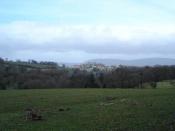The Advisory, Conciliation and Arbitration Service (ACAS)
History
Before analysing the ACAS Arbitration Scheme, a brief history of the organisation will be offered, whereby providing a more thorough understanding of the subject as a whole.
The ACAS Arbitration scheme was established on the 2nd of September, 1974. Initially the organisation was known as the "Conciliation and Arbitration Service". It was renamed the "Advisory, Conciliation and Arbitration Service" in January 1975 to reflect more accurately the range of services on offer . On the 1st of January 1976, ACAS became a statutory body under the Employment Protection Act 1975.
The composition of ACAS today is largely governed by Part VI of the Trade Union and Labour Relations (Consolidation) Act 1992. The organisation of the Scheme is made up of a chairman and between nine and fifteen members, with three of four members representing unions, three or four representing employers and the remainder being 'independents'.
ACAS was set up as a body 'independent of the government, in particular independent of the Department of Trade and Industry' . This independence from governmental control is a unique feature, however ACAS does makes an annual report on its activities which, is laid before Parliament .
Rationale
The general aims of ACAS can be found in the Trade Union and Labour Relations (Consolidation) Act , which states "it is the general duty of ACAS to promote the improvement of industrial relations'. This is further expanded as follows:
'?and in particular to encourage the extension of collective bargaining and the development and, where necessary, reform of collective bargaining machinery' .
The Conservative Government repealed the wording intended to extend the aims of ACAS with the introduction of the Trade Union Reform and Employment Rights Act 1993. The words 'in particular by exercising its functions in...


